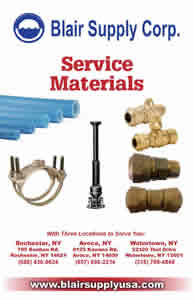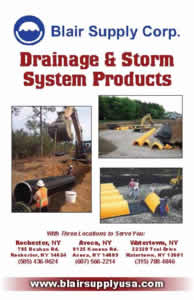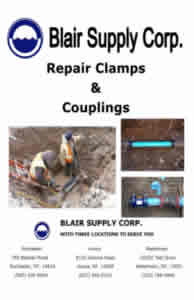Blog
Common Water Infrastructure Problems & What Can Be Done
One of the biggest problems facing the United States is the water infrastructure is old and falling a part, effecting many people in both cities and rural areas across the country. It’s a huge challenge that has largely been ignored by governments and other institutions partly because it has been easier to patch up than fix – until we have massive failure.
The American Society of Civil Engineers (ASCE) recently stated that the federal government needs to invest around $4 trillion on the infrastructure alone in the next 5 years to bring the water infrastructure up to code. And the worst part is most people don’t realize the extent the problem. For example, the United States has 1.2 million miles of main water supplies which is equivalent to 26 miles of water mains for each mile of interstate highway –that is a lot of water mains to maintain.
In many parts of the country, the unmanaged stormwater systems affect the streams, rivers, and lakes, and cause health problems among nearby communities such as in Flint, Michigan in 2016 resulting in a state of emergency, lawsuits, and long term and short-term illness. As bad as the water crisis was in Flint, it is only the tip of the iceberg according to Reuters. An investigative report released in 2016 found nearly 3,000 areas in the United States with lead contamination rates at least double those in Flint resulting from poor water infrastructure.
There is little doubt water infrastructure is getting worse as the years pass by and nothing is being done about it. If it is not addressed, the pipes and other components will cost more to repair and may cause thousands if not millions of people to become gravely ill.
Here are some ways we can solve water infrastructure problems:
Create Better Federal-Level Governance
Water is a universal commodity that transcends borders. One town’s water usage or pollutant dumping can affect other cities or states that rely on the same water supply. That’s why many developed nations including the United Kingdom, Canada, and Australia have some sort of national water authority that oversees water management across the country. This is not the case for the United States. Instead the country’s water is managed by thousands of municipalities, every one has slightly different regulations and rules. This makes it difficult to initiate and complete large-scale projects and massive overhauls. By having a common federal government strategy across the country, the structure would be in place to tackle the huge water issues at hand.
Increase the Budget for Water Infrastructure
The government spends only two percent of its GDP on infrastructure— about 388 billion dollars – and water infrastructure makes up just a small part of that. Unfortunately, Water, infrastructure just isn’t a government priority. Perhaps, it’s just because the infrastructure is underground – out of sight, out of mind – and people don’t realize how bad the situation is. Water infrastructure isn’t like a road where people travel on it daily and notice the cracks and bumps. Whatever the case, the government needs to divert funds from other projects to pay for water infrastructure.
Lack of Private Investors
Many private investors are interested in investing in water-related issues, but there is a lot of red tape and conditions that make private investors hesitant. The problems include how to deal with environmental impact, regulations, and other stakeholders. Another challenge is getting investors to understand how complex and important water is; for example, many investors don’t know how water infrastructure affects agriculture and many other business sectors. However, solving these issues can give water infrastructure projects a much-needed investment.
Increase Public-Private Partnerships
If people are not ready to completely privatize, one of the alternatives is to finance water infrastructure projects through a public-private partnership program.
In this program, a public agency will enter into agreements with private associations that deals with construction, engineering, design, and operating companies to construct and rehabilitate water facilities. It also includes the maintenance of infrastructure facilities which include the treatment plants, rail lines, and bridges.
With this business model, project problems such as schedule delays and cost overruns won’t just be passed onto the taxpayers. In some cases, the entire water system is transferred to the private partner via privatization.
Study Issues Surrounding Water Infrastructure
As part of the America’s Water project and other research efforts, organizations are looking into the past to understand the types of droughts and floods that we had and how best to combat them. For example, the longest drought on record in the Northeast U.S. lasted 16 years; while in Mississippi, the citizens suffered through a 64-year drought. Information like this helps governments and other stakeholders make informed decisions about the kinds of water infrastructure we will need in the future.
As the climate changes, so will human needs. Fluctuations in heat, humidity, and rainfall patterns are going to shape where we live, grow food, and produce energy. Research center can help analyze and predict these trends, so that Americans will continue to have water whenever and wherever they need it without shortages.
Taking Action Is the Right Choice
With the various challenges to the water system, the country needs a national and strategic plan on how to address the water concerns. As shown, the aging water infrastructure has affected the health of thousands of people across the country and resulted in both short-term and long-term consequences – financially, environmentally, and health-related.
Due to the lack or resources and political will, pollution problems, outdated infrastructure, rising costs, unprecedented droughts and rainfall patterns as the climate changes, the U.S water infrastructure is slowly failing. Yet it’s not too late to fix these issues if we act quickly to get the water system up to standard for the next generation of Americans. With a little out-of-the-box thinking, including seeking funds from alternative sources, disaster can be avoided.






